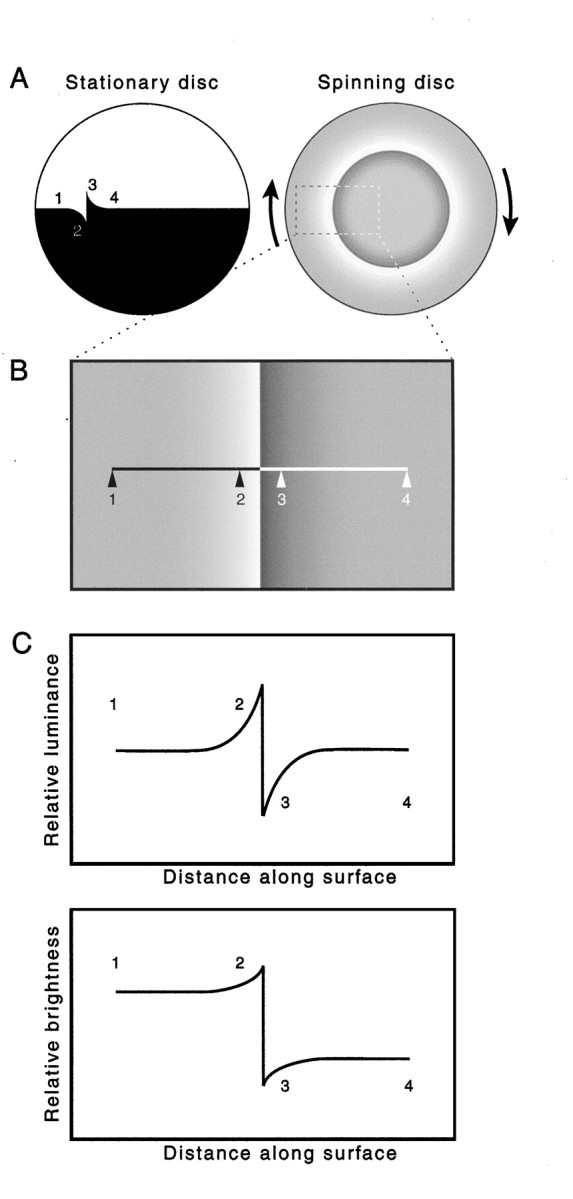Fig. 2.

The Cornsweet illusion. A, Diagram of the painted disk used by Cornsweet (1970) to demonstrate that when two equiluminant regions are separated by an edge comprising a pair of oppositely disposed luminance gradients, the adjoining territories are filled in by illusory brightness values. Numbersindicate corresponding points in B and C.B, Standard presentation of the Cornsweet stimulus, which is effectively a blowup of a portion of the rotating disk with the curvature removed. C, Comparison of the photometric and perceptual profiles of the stimulus in B. Despite the equal luminances of the territories adjoining the two gradients, the territory (1) to the left of the light gradient (2) looks lighter than the territory (4) to the right of the dark gradient (3).
